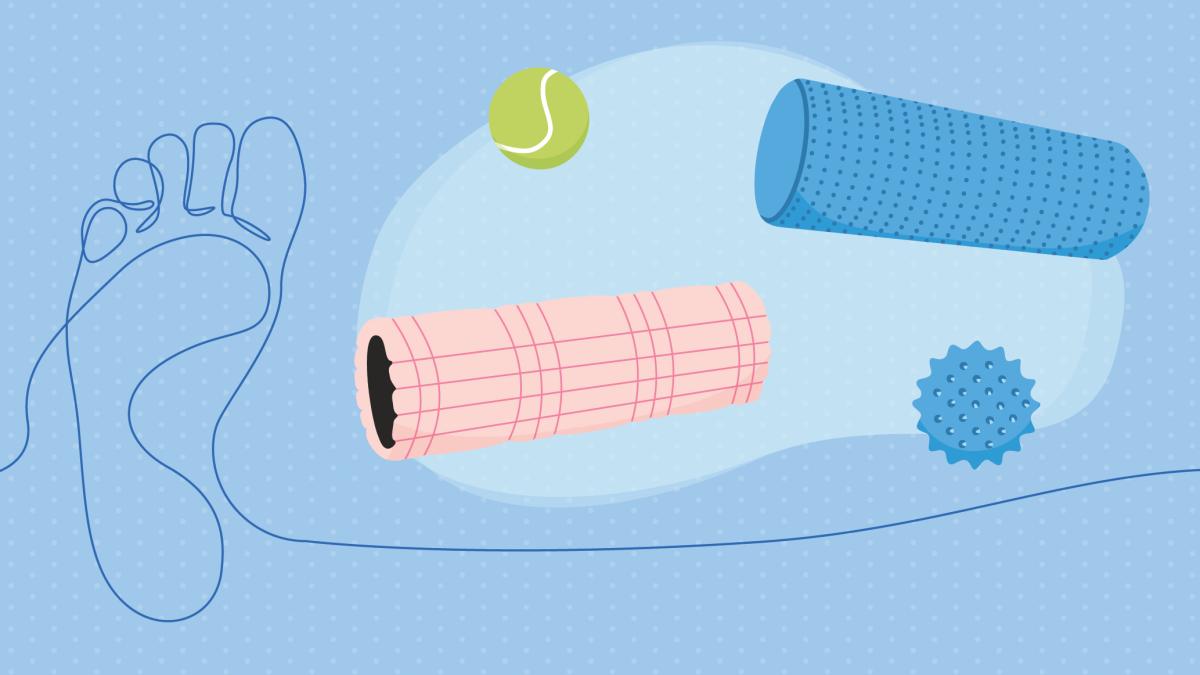Learn How to Use Self Massage to Manage Diabetes

Diabetic Peripheral Neuropathy (DPN), commonly known as Diabetic Foot, is a metabolic disorder that affects the blood circulation of individuals with type 2 diabetes. It is a condition that develops gradually over time and can have a significant impact on an individual's quality of life.
People with Diabetic Foot can experience decreased muscle function in their lower legs, difficulty with ankle movement, and a lack of sensation in the sole of the foot. This can increase the risk of falls, particularly in older adults, and can also lead to foot ulcers and other complications.
To prevent potential issues, it is essential for those with diabetes to inspect their feet daily. This helps to detect any changes in the foot, such as sores, cuts, or blisters, which can be a sign of an underlying problem. Prompt attention and treatment of these issues can prevent more serious complications from developing.
One effective and simple treatment for Diabetic Foot is massage therapy. Massage helps reduce pain and improve sensation in the feet, which can in turn improve balance and reduce the risk of falls. Reflexology, which involves applying pressure to specific points on the feet, can also be helpful in improving circulation and reducing pain.
It is important for you to have good flexibility in your knees and hips in order to self-massage your feet effectively. Before beginning self-massage, it is important to get clearance from a podiatrist, especially if your feet have ulcers or wounds.
Self-massage can be done using massage tools or a home-based program for self-massage supervised by a remedial massage therapist. Between massage therapy treatment sessions, you might benefit from using foot rollers, balls, and foam rollers while seated to maintain flexibility and improve circulation.
In addition to massage therapy, optimal blood sugar control is crucial in managing Diabetic Foot. This can slow the progression of the condition and prevent more serious complications from developing.
We have created a guide to help you perform self-massage at home. All exercises are done seated in a chair and involve a range of tools to get the most out of your massage.



Self Foot Massage Guide
Seated warm-up
Goals: To increase ankle mobility/blood circulation/tissue flexibility
|
Ankle circling with ball Place a soft ball under the centre of your foot. Press down gently into the ball and move it in circle movement with your ankle for 1 minute. Repeat on the other side. |
|
|
Ankle mobilisation with foam roller (forwards and backwards) Place a foam roller under the centre of your foot. Press down gently and roll forwards and backwards along the length of your sole for 1 minute. Repeat on the other side. |
|
|
Ankle mobilisation with foam roller (eversion movement) Place a foam roller in approximately a 45 degree angle in relation to your foot. Press down gently and roll forwards and backwards along the length of your sole for 1 minute. Keep the foam roller in contact with your sole for the entire duration. Repeat on the other side. |
|
|
Stepping heel on the opposite foot Using your heel, press firmly on the toes of your opposite foot and hold for 10 seconds. Move your heel up to the dorsal part of the opposite foot, press and hold for another 10 seconds. Repeat 3 times, then repeat the motions on the other side. |
|
|
Seated calf raise Place both feet on the floor and rise onto your toes. Hold your heels off the floor for 10 seconds. Repeat this 3 times then swap to the other side. Make sure to slightly bend your knee and brace your abdominal muscles to help support your upper body.
|
|
|
Tibialis anterior stretching Slide your foot forward, keeping a full sole in contact with the floor without lifting your toes. Hold the position for 10 seconds and repeat 3 times, then swap to the other side. |
|
|
Toe stretch Lift the heel, keeping your toes in contact with the floor. Hold the position for 10 seconds and repeat 3 times, then swap to the other side. |
Seated Massage Techniques
Goals: To increase ankle mobility/blood circulation/tissue flexibility
|
Full sole massage with tennis ball Place a tennis ball under the centre of your foot. Press down firmly into the ball and roll along the length of your sole for 1 minute. Repeat on the other side. |
|
|
Stepping foot over other foot with ball At different times, place a tennis ball under the front/middle/back of your sole. Press down firmly onto your foot using the opposite foot and hold for 1 minute in each position. Repeat on the other side. |
|
|
Seated foot roll with foot roller Place the arch of your foot in the centre of the roller. Press down firmly into the roller and roll along the length of your sole for 1 minute. Repeat on the other side. |
|
|
Arch edge roll Allow the inner edge of the foot to sit in the inner edge of the roller and roll gently along the length of your inner sole for 1 minute. Repeat on the other side.
|
|
|
Outer edge roll Allow the outer edge of the foot to sit on the outer edge of the roller and roll gently along the length of your outer sole for 1 minute. Repeat on the other side.
|
Diabetic Foot is a serious condition that can significantly impact your quality of life. But regular foot inspections and massage therapy can help manage symptoms and reduce the risk of falls and other complications. By working with a healthcare professional and taking a proactive approach to managing the condition, you can continue to lead an active and fulfilling life.
Sources -
Share this article

